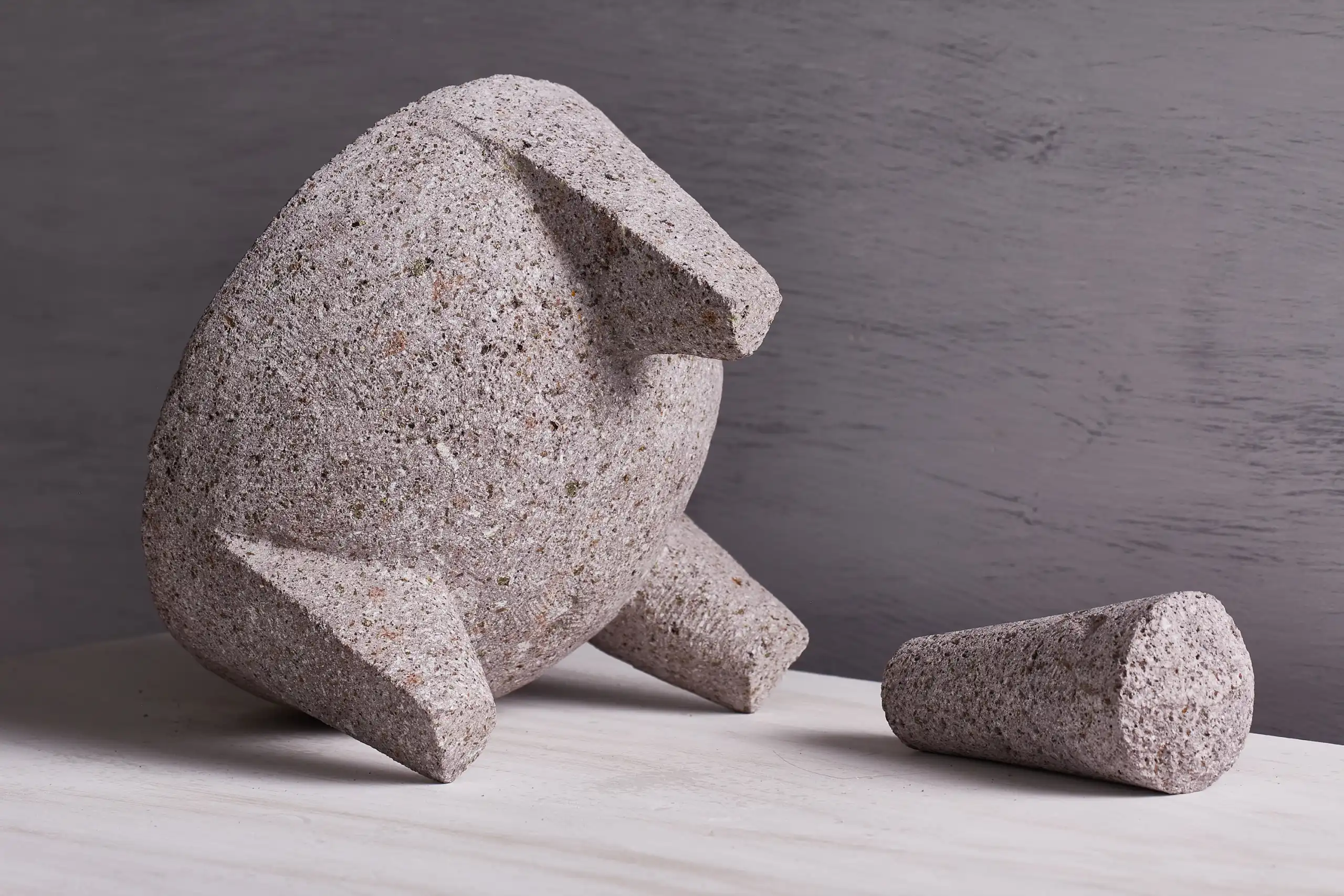Molcajetes
With a documented history dating back 10,000 years or more, the molcajete (or mortar and pestle) is one of the oldest implements used by man. Grinding or mashing foodstuffs between two rocks is still as relevant a cooking technique as when Mesoamerican craftspeople were making them in the Xaagá caves above the village of Mitla.
River Rock Molcajetes
Substantial, dense molcajetes made from natural river rocks. The exterior form and texture of the rocks is maintained as the principal design motif, while the base is flattened, and the top hollowed into a convex, bowl-like indentation.
Purple Volcanic Stone Molcajetes
Volcanic stone molcajetes from the Valles Centrales region, made from native mined rock. These feature a fully-carved three-footed design, smooth outer walls, and elegantly angular cut feet.
We offer molcajetes produced in two different styles and types of rock, in two different regions of the state of Oaxaca.
Similarities
Both our river rock and purple volcanic rock molcajetes have an interior texture that is intended for making salsa, not for grinding spices or the like. While both will smooth out over time, and could then be used for things like spices, many cooks in Oaxaca prefer to maintain a rough interior texture in order to quickly cut through tomato skins and dried chilies. Pounding out a salsa in either style of molcajete is an activity that takes a couple minutes at most, at least to reach the style of texture that is traditional in southern Mexico.
Differences
Beyond distinct visual aesthetics, there are a few things that distinguish the two styles in use. The purple volcanic stone is lighter weight, which is helpful in cleanup. The extra heft of the river rock molcajetes is helpful in use, as they don’t move around much, or at all, depending on size. Everything about the river rock molcajetes is more rounded, including the edges of the tejolote (or pestle). The rounded corners have a comforting feeling in use, but the purple volcanic molcajetes offer a bit more grip, due both to those sharp edges and a rougher finished texture on the tejolote.
Before making a salsa, both styles of molcajete need to be seasoned (which is to say, you will need to spend a few minutes grinding something that you don’t intend to eat). The river rock is a bit faster to season and slower to wear, due to being made from a somewhat denser stone.
Relevance in a modern kitchen
Decades ago, many kitchens switched to making salsas in blenders and to grinding spices in electric mills. Now, many are switching back to using molcajetes for some or all of their mashed and ground preparations. In most cases, this is not due to some sort of nostalgic yearning for simpler times, nor a fear of technology. Instead, many cooks have realized that the culinary attributes of foods produced in a molcajete are simply different than those obtained via use of electric kitchen appliances.
For instance, in a molcajete, a tomato-based salsa is typically made so that the tomatoes retain a chunky pounded texture. Finishing condiments, like cilantro or chepiche, are integrated and slightly broken to release aromatics, while other ingredients, like garlic and serrano chiles, are ground to a paste before the addition of other components.
The textural results are impossible to achieve in a blender, while the flavor profiles of, say, garlic paste and pounded tomatoes, are substantially distinct from those produced by mincing or blending.
Water or highly liquid ingredients are not needed to blend a salsa in a molcajete. One can make a relatively dense salsa from ingredients that are left raw or seared on a dry comal (o sea, tatemado) without the need to then reduce the mixture on the stove.
Environmental considerations
Everyone reading this page likely either already owns a blender and/or food processor or has ready access to those appliances. As much as we would like to believe otherwise, buying a molcajete will not save the world and may not reduce your environmental footprint. However, depending on what you cook and how you cook it, a molcajete could eventually usurp the place that one or more electric appliances now own in your kitchen. We choose to believe that sort of change could be beautiful, both in your cooking, in how you think about the resources around you, and in possibly reducing dependence on resource intensive cooking tools. Read more about the relative environmental impact of our molcajetes and pottery, should that interest you.


